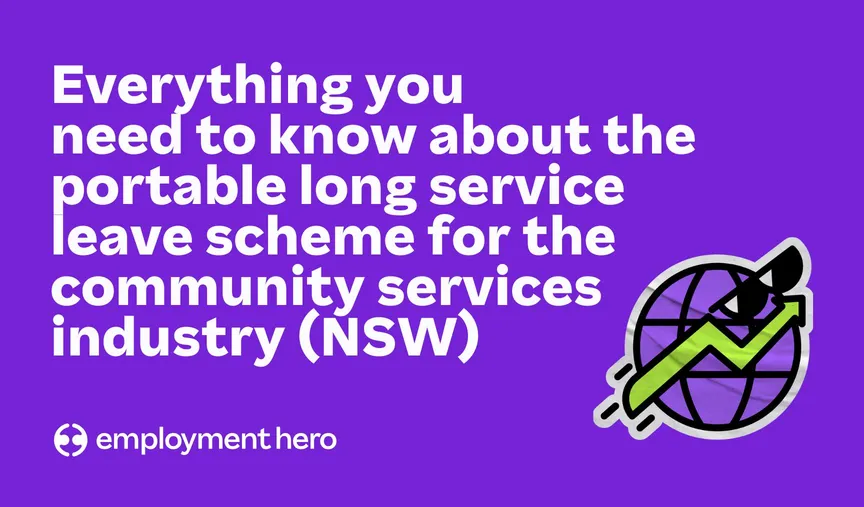5 Steps to Refresh Your Business Plan
A refreshing look at what a business plan is and how it can help you achieve your goals.

Contents
When you launched your small business, all bright-eyed and bushy-tailed, no doubt you pulled something together that resembled a business plan. You may have downloaded the Australian Government’s Business Plan template, or simply jotted down a big goal to keep you motivated.
Perhaps, your business plan exists entirely in your head. Either way, from where you stand today reflect on how far your business has come and the lessons you’ve learned along the way. If the goal post has moved – it’s time to refresh your business plan.
In fact, even if the goalpost stands firm, taking the time to refocus and plot your next move is guaranteed to be a valuable exercise. The good news is, it doesn’t have to be tedious! In fact, we recommend just five simple steps.
1. Cement your VVP (Vision, Values & Purpose)
With experience under your belt, now is the time to define (or redefine) why you’re in business. As a business owner, your ability to effectively communicate a vision is critical. It provides a roadmap for you and your employees, bigger than any day-to-day task.
Harry Beckwith once said, “People don’t lead, purposes do”. So, to define your vision, start with what gets you up in the morning (hint: it’s bigger than money). Your vision should be big, bold, stated in no more than one sentence and written in simple language.
Some well-known examples are:
- To experience the emotion of competition, winning, and crushing competitors – Nike
- To make people happy – Disney
- Creating “wow” experiences – Pulse220
Your vision should be firmly grounded in your business values. Values are there to guide your entire organisation, from how employees treat your customers to each other.
Often, these are reduced to overcomplicated corporate nothings that no one remembers, let alone puts into action. Sound familiar? A great way to identify authentic business values that will genuinely underpin the way you operate is to look at your own.
Think about three people in your professional (or personal) life that have made a positive impact on your career. Now, write down all of the qualities that you admire in those people. Next, look for commonalities.
You’ll soon recognise themes and in turn, a set of 3-5 powerful values that resonate.
Additionally, considering an HR strategy is crucial. Failing to plan is the same as planning to fail when it comes to people management. Here are eight reasons to approach HR strategically: 8 Actionable Long-term HR Strategy Plan Examples.
2. Identify your Unique Selling Proposition
It’s likely that before you even started your business, you saw a need, a gap in the market that no one else could address quite as you could. Perhaps you noticed a demand for a cocktail bar in a small rural area, so you eagerly opened your doors and started mixing.
Now that you’ve been in business for a while take a moment to reconsider your unique selling proposition.
Using our example, perhaps it’s not so much your cocktails that make you stand out but the “city experience” you offer moments from home. This is the kind of learning that only time and experience can garner, and it’s pivotal to your business plan.
The key here is to really look at what you’re doing differently that sets you apart from similar products or services in the industry. A few starter questions could look like:
- What is something you offer that is totally unique in the area you’re selling it?
- Do you provide a promise or guarantee of sorts? How is this different from other businesses in your industry?
- Does your product have a particular look/ feel/ taste that can only be found in your business?
- Are there levels of customisation or personalisation that are totally unique?
You can answer these questions yourself, or better yet, ask your existing customers to answer them for you. You might be surprised at the answers they come up with!
As your business grows and changes, pricing strategy should follow as well. Here are seven signs it might be time for a change: Pricing Strategy Business Plan: Is It Time to Revisit Yours?
3. Refine your target market
As your business grows, narrowing down who (or what kind of customer) you need to be targeting will be paramount to your success. This will not only help improve your product or service offering but guide the way you communicate across all promotional activities.
Refining your target market is the practice of really getting inside your customer’s heads; understanding their motivations, aspirations and interests. Often referred to as segmentation or defining your niche, it’s the second most important component of a solid business plan.
Consider your customer:
- What age, income bracket and education level do they belong to?
- What are their core values? What are some of their beliefs and attitudes?
- What level of quality do they shop for? Is it handmade, premium or economical?
- What country, city or neighbourhood are they a resident of?
What you’ll start to notice is two-fold. First, you’ll build a picture of who your customer really is, from how they speak to what they like to do for fun on the weekend.
Second, you may find your actual customer is a little different to your assumed customer (or the customer you thought you’d attract when you launched your business).
That’s powerful!
Want to take your business to the next level? Check out these 6 networking tips that will help you build strong professional relationships: The small business owner’s guide to networking.
4. Set a 5-year target
You’ve got your direction firmly in place, now it’s time for the nitty gritty. How will you put all of this into action? Well, with a big, hairy audacious goal (BHAG), that’s how. Start big-picture, and work back from there.
Ask yourself, where do I want to be in 5 years’ time? Take the time to really consider what your business will look like from your product offering to your staff and even your location.
Your objectives should be SMART:
- Specific: When thinking of a goal, make sure you’re not leaving any room for guess-work
- Measurable: Anything long-term should have a way it can be measured – This could include how big you would like the business to grow in number of employees, profit or results
- Attainable: Is your goal realistic? Dream big, but account for execution
- Relevant: Do your goals line up with your niche, selling proposition and purpose?
- Timely: Any good financial and business plan will include specific dates – jot them down
Once you’ve outlined the long-term vision, split your business plan into manageable milestones. Consider what you’ll need to achieve in Year 1, Year 2 and so on to ensure you reach your five-year target.
The trick is not to overthink it. It’s a game plan, not a to-do list.
Don’t rely on morale alone to make your goals happen, especially in 2022. Trick your brain with these science-approved hacks: 20 science-approved ways to achieve your New Year’s goals.
5. Review your business structure
Outside of who, what and why you’ll be going about getting your product or service to market, one of the most important decisions you’ll make about your small business will be the legal structure.
It’s not only critical to the way you’ll operate day to day, but a business structure will affect how much tax you pay, how much paperwork is required and what type of personal liability you will hold. However, your business structure is not something you can set and forget.
As your business grows, your legal and financial needs will change. That’s why, when refreshing your business plan, it’s advisable to seek legal counsel on the pros and cons of different entities.
Let’s define what these could look like:
- A Sole Trader: This is the simplest and cheapest way to set up a business, and allows complete managerial control to the sole trader/owner. You’re legally responsible for all aspects of the business, including debts and losses. As a sole trader, you’re responsible for paying your employees as well as your own super.
- A Partnership: In a partnership, you share the profits, debts and losses with a group or partner, as well as sharing the income. Quite inexpensively set up, partners share control of all business decisions. A written agreement is advised (but not required) here in order to clearly define how profits and losses will be distributed, if not evenly.
- A Company: Run by its directors and owned by its shareholders. Initially, companies require higher set up and administration costs, which come with higher reporting requirements. Companies are regulated by the Australian Securities & Investments Commission (ASIC).
Plan your work, and work your plan
The end goal? Success. It’s every small business owner’s dream. For you, that might be passive income (kicking your feet up, sipping on an icy cold mojito), a loyal customer network or a business that runs like a well-oiled machine.
Whatever success means to you, a well-considered business plan will get you there. However, a business plan is not a static document! Keep it fresh with our five simple steps. Remember, start with the big picture and work your way back.
The fundamentals will always remain the same – why are you in business, what do you do that’s different, who are you targeting and how will you get there?
Related Resources
-
 Read more: NSW Government introduces Portable Long Service Scheme for the Community Services Industry
Read more: NSW Government introduces Portable Long Service Scheme for the Community Services IndustryNSW Government introduces Portable Long Service Scheme for the Community Services Industry
The NSW Government has introduced portable long service leave for the community services industry. Learn what it is and what…
-
 Read more: Payday Super changes: What we’re fighting to fix and why it matters to you
Read more: Payday Super changes: What we’re fighting to fix and why it matters to youPayday Super changes: What we’re fighting to fix and why it matters to you
Big changes are coming to how superannuation is paid in Australia. Here’s what we’re asking Treasury to seriously consider updating…
-
 Read more: Why choice in superannuation matters
Read more: Why choice in superannuation mattersWhy choice in superannuation matters
What could be coming when Payday Super hits and what Employment Hero is doing about it.











